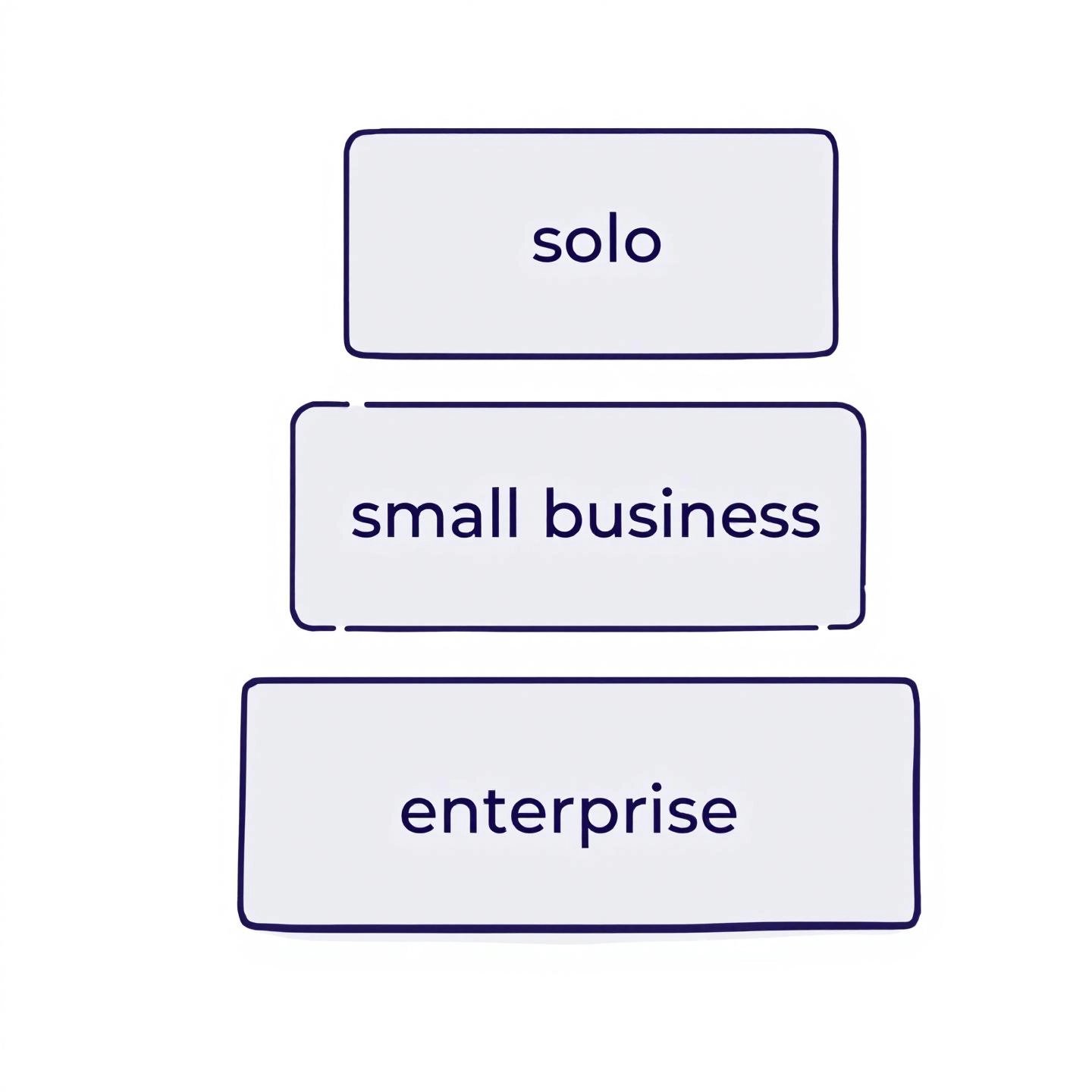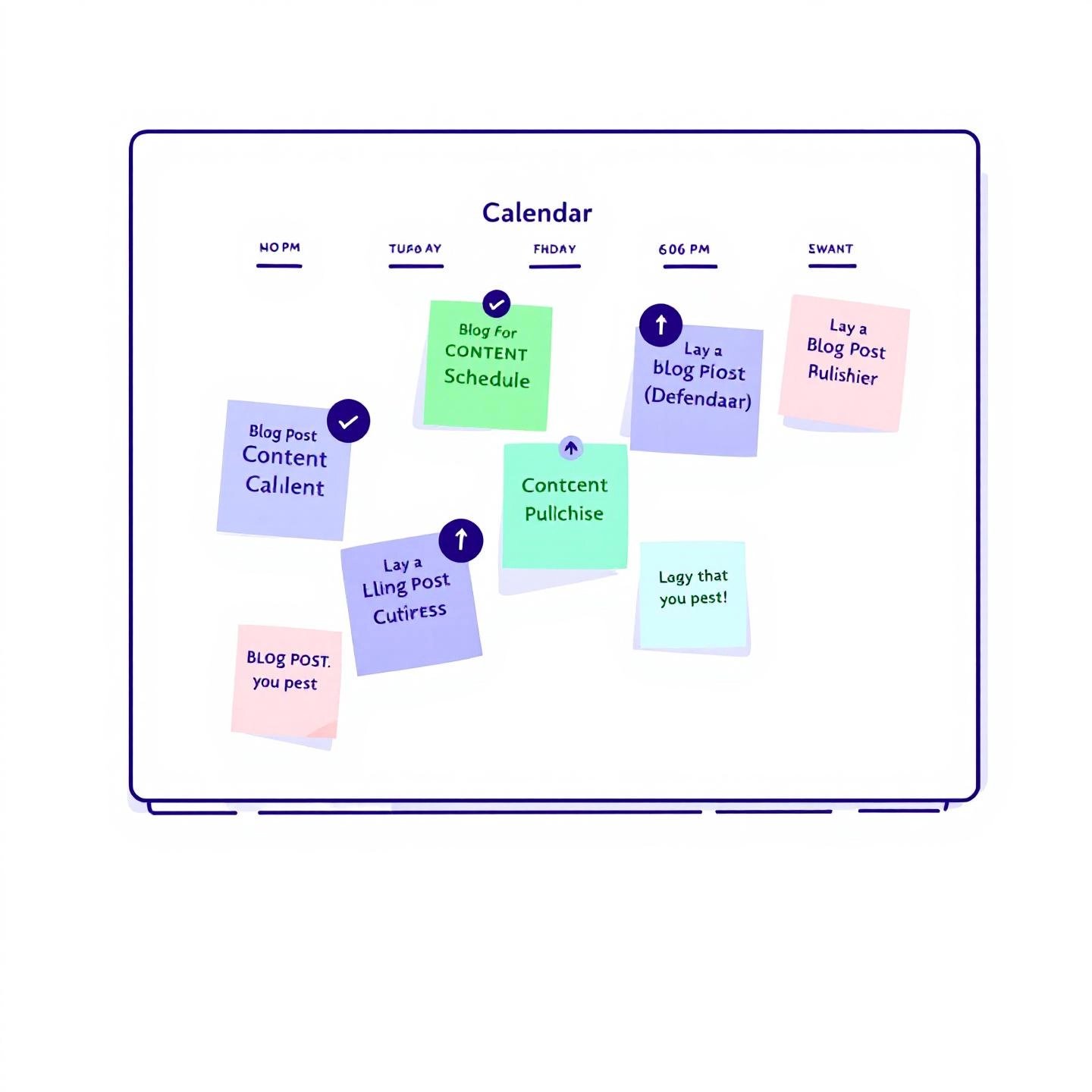How Many Blog Posts Per Week?
"How many blog posts per week?" If you’re a business owner or marketing leader, chances are you’ve wrestled with this question more than once. It sounds straightforward, but the reality is anything but simple. In today’s fast-moving digital landscape, blog post frequency has become a hot topic—and for good reason. The right cadence can help you grow your brand, engage your audience, and boost your search engine visibility. But is there a magic number that fits every business?
Imagine you’re launching a new blog for your business. You might be tempted to look for a one-size-fits-all answer—perhaps a rule like “publish three times per week” or “post daily for maximum traffic.” But as you’ll soon discover, the ideal frequency is much more nuanced. Some companies thrive with daily updates, while others see incredible results from just one high-impact post each week. Why such a wide range? Because your optimal blog posting schedule depends on several unique factors:
- Your business goals: Are you aiming for rapid brand awareness, long-term SEO growth, or nurturing existing customers?
- Available resources: Do you have a team of writers, or are you a solo entrepreneur managing every post yourself?
- Industry norms: Some sectors—like tech or news—demand frequent updates, while others value depth and analysis over volume.
- Audience expectations: How often does your audience want to hear from you? Too many updates can overwhelm, too few may lead to disengagement.
- Commitment to quality: Can you consistently deliver valuable, well-crafted content, or does rushing to meet a quota risk diluting your message?
According to industry insights, frequent posting can drive faster content library growth and more opportunities for search engine ranking, but only if you can maintain high standards of quality and relevance. Google’s own experts advise publishing “as often as you have something unique & compelling to say” instead of forcing a rigid schedule that could result in thin or repetitive content.
Throughout this guide, you’ll learn how to assess your business’s unique situation and set a blog post frequency that fits your goals, resources, and audience needs. We’ll break down the pros and cons of different schedules, highlight how quality trumps quantity, and show you how to build a sustainable plan for long-term growth. If you’re looking for a tailored approach, professional services like BlogSpark can help craft a strategy that aligns with your vision—ensuring every post adds value and drives results. Ready to unlock your growth? Let’s dive in.
Why Posting Frequency Is Not a One-Size-Fits-All Answer
When you first ask, "How many blog posts per week?" it’s tempting to hope for a universal answer—a golden rule that guarantees results. But as you dig deeper, you’ll notice that the ideal blog posting schedule isn’t about chasing a magic number. It’s about finding what fits your business’s unique needs, resources, and goals. Sounds complex? Let’s break it down so you can make a confident, informed decision.
Key Variables That Shape Your Blog Posting Frequency
Every business is different, and so is the path to content success. Here are the major factors that influence how often you should publish blog posts for your business:
- Business Goals: Are you focused on rapid growth, brand awareness, or nurturing customer loyalty? For example, a startup aiming for fast visibility might need a more aggressive posting schedule than a well-established brand that prioritizes deep, educational content.
- Audience Expectations: How often does your target audience want to hear from you? Some readers prefer frequent updates—think tech or news sectors—while others appreciate quality over quantity, such as in luxury or B2B industries. Use analytics and feedback to understand what your audience values most.
- Available Resources: Do you have a team of writers, editors, and strategists, or are you managing content solo? Your ideal blog posting schedule must align with your capacity to produce high-quality work consistently. Overcommitting can lead to burnout or diluted content.
- Industry Competitiveness: Are you in a fast-paced niche where competitors publish daily, or a specialized field where monthly deep dives are the norm? In highly competitive industries, posting more frequently can help you stay visible and relevant, but only if you maintain quality.
- Company Stage: Is your business just starting out, or are you an established authority? Newer brands often benefit from a higher frequency to build a content library and gain traction, while mature companies might focus on updating existing content and publishing strategic pieces.
- Content Type and Depth: Are your posts short news updates, comprehensive guides, or evergreen resources? In-depth, research-driven articles may take longer to produce but offer lasting value, while timely posts help you capitalize on trends.
Examples: How Context Drives Your Ideal Blog Posting Schedule
Imagine two businesses: a SaaS startup and a luxury watch retailer. The SaaS company might need to answer dozens of industry questions and keep up with rapid feature releases, making 4-5 posts per week a smart move. The luxury watch brand, on the other hand, may thrive on two meticulously crafted posts per month that showcase craftsmanship and exclusivity. Both approaches are valid—the difference lies in their unique contexts and goals.
Finding Your Sweet Spot
Ultimately, the best answer to "how many blog posts per week for business" comes from understanding your own situation and being willing to adapt. Start by assessing your goals, audience, and resources. Then, monitor performance and adjust your strategy as you learn what works best. In the next section, we’ll explore how posting frequency impacts SEO and why consistency often matters more than volume.

How Many Blog Posts Per Week for SEO?
When you start thinking about SEO, it’s natural to ask: How many blog posts per week? The answer isn’t as simple as picking a number and sticking to it. Search engines like Google reward much more than just volume—they pay close attention to the consistency, quality, and relevance of your content. Let’s break down what really matters for SEO blog posting frequency, so you can make each post count.
Why Consistency Beats Random Bursts
Imagine you’re a search engine crawler—your job is to scan websites and decide which pages to show for each query. When you see a site that publishes new, well-crafted posts on a reliable schedule, you’re more likely to return often. This steady rhythm helps your content get crawled and indexed faster, which means your latest articles appear in search results sooner and more reliably.
- Crawling: Search engine bots visit your site to discover new or updated content. Frequent, predictable updates encourage more regular crawling.
- Indexing: Once crawled, your pages are added to the search engine’s database. Consistent posting speeds up this process, keeping your site fresh in search results.
On the flip side, if you post sporadically—maybe five posts in one week and nothing for a month—search engines may not crawl your site as often, and your audience can lose interest. Consistency signals reliability to both Google and your readers.
What’s the Ideal SEO Blog Posting Frequency?
There’s no official rulebook, but research and industry experience suggest a strong starting point: aim for one to two high-quality blog posts per week if you’re just getting started or want to build a foundation for SEO success. This pace keeps your site active, helps you target a wider range of keywords, and gives you enough time to ensure each article is valuable and well-optimized.
- 1–2 posts per week: Ideal for most small and medium businesses focused on long-term growth and authority.
- 2–4 posts per week: Recommended if you’re in a competitive industry or want to accelerate your SEO gains.
- At least 1 post every two weeks: Considered the bare minimum to signal ongoing activity to search engines.
It’s tempting to believe that more is always better, but quality matters just as much as quantity. Overloading your blog with rushed, low-value content can actually harm your SEO by reducing engagement and increasing bounce rates. Instead, focus on delivering value in every post.
Topical Authority: Why Regular, Relevant Content Wins
SEO isn’t just about getting crawled—it’s about becoming a recognized expert in your niche. By publishing on a consistent schedule, you build topical authority: the reputation of being a trusted resource on key subjects in your industry. Each new post is a chance to answer your audience’s questions, address trending topics, and strengthen your internal linking structure, all of which help boost your rankings over time.
- Consistent posting allows you to cover a wide range of keywords and topics, reinforcing your expertise.
- Internal links between posts help distribute authority and improve the SEO of older articles.
- Fresh content encourages readers to return and engage, which sends positive signals to search engines.
Think of your blog as a living library—the more thoughtfully organized and frequently updated it is, the more useful it becomes for both users and search engines.
Quality Over Quantity: Avoiding the Pitfalls
While it might be tempting to chase higher numbers, remember that publishing too frequently can lead to content fatigue, both for your team and your audience. Search engines may even flag excessive, thin content as spammy, which can hurt your rankings. On the other hand, posting too infrequently makes it harder to stay relevant and maintain your audience’s interest.
Ultimately, the best SEO blog posting frequency is one you can sustain without sacrificing quality. Start with a manageable schedule, track your results, and adjust as your resources and goals evolve. In the next section, we’ll explore why quality should always take precedence over quantity—and how to ensure every post delivers real value for your readers and your rankings.

The Critical Role of Quality Over Quantity in Blogging
Picture this: you publish five quick blog posts in a week, but none of them offer much value. Contrast that with a single, thoroughly researched article that answers your readers’ top questions and earns their trust. Which approach do you think will help your business grow in the long run? When considering how many blog posts per week, it’s easy to focus on numbers, but the real differentiator is quality. Let’s explore why high quality blog content consistently outperforms a high-volume, low-value approach—and how you can ensure your posts stand out in today’s crowded digital landscape.
What Does "Quality" Mean Today? E-E-A-T, User Intent, and Originality
Gone are the days when you could climb the search rankings simply by churning out lots of short, keyword-stuffed posts. Google and your audience now expect much more. So, what defines quality blog content in 2024? Three core concepts stand out:
- E-E-A-T (Experience, Expertise, Authoritativeness, Trustworthiness): Google uses these criteria to assess whether your content is credible, accurate, and genuinely helpful. Demonstrating first-hand experience, showcasing expertise, citing reputable sources, and building a trustworthy brand are all essential.
- User Intent: High quality blog content answers the specific questions your audience is searching for. It’s not just about what you want to say, but about meeting the needs and expectations of your readers.
- Originality: Unique insights, fresh perspectives, and real-life examples are what set your posts apart from the competition. Avoid regurgitating what’s already out there—offer something new or more in-depth.
Imagine you’re a reader looking for advice on a complex topic. Would you trust a shallow overview, or would you bookmark and share a post that’s well-researched, includes expert commentary, and links to reputable sources? The answer is clear—quality wins.
Quality vs. Quantity Blogging: What the Data Shows
It’s tempting to believe that more is always better, but real-world experiments tell a different story. For example, HubSpot ran a test comparing low-volume, high-comprehensiveness (fewer, deeper posts) with high-volume, low-comprehensiveness (more, lighter posts). While high-volume posting generated a slight uptick in short-term leads, it also led to increased subscriber churn and required significantly more effort. Most importantly, the long-term growth in traffic and leads was driven by high-return, in-depth content, not by the sheer number of posts.
| Strategy | SEO Ranking | User Engagement | Brand Reputation | Lead Generation |
|---|---|---|---|---|
| Quality-Focused (Fewer, In-Depth Posts) | Improves steadily with time; builds topical authority | Higher average time on page, more shares and comments | Strengthens trust and perceived expertise | Attracts qualified leads, better conversion rates |
| Quantity-Driven (Many, Surface-Level Posts) | Short-term spikes possible, but risk of lower rankings from thin content | Lower engagement, higher bounce rates | Can dilute brand authority if quality drops | May increase lead volume briefly, but less qualified |
Why Quality Content Pays Off
- SEO Benefits: In-depth, authoritative articles are more likely to earn backlinks and rank for competitive keywords. Google’s algorithms reward sites that demonstrate expertise and trustworthiness over time.
- Audience Loyalty: Readers are more likely to return, subscribe, and share content that answers their questions and solves their problems.
- Brand Differentiation: High quality blog content positions your business as a leader in your space, setting you apart from competitors who rely on volume alone.
- Lead Quality: Detailed, helpful posts attract visitors who are genuinely interested in your solutions, improving the chances they’ll convert into customers.
Finding Your Balance
It’s natural to wonder if you should scale up your publishing frequency to compete. But if you compromise on depth, accuracy, or originality, you risk undermining your efforts. Instead, focus first on creating the best possible content for your audience—even if that means fewer posts each week. Once you have a sustainable process for producing high quality blog content, you can gradually increase frequency without sacrificing standards.
Next, we’ll help you assess your resources and choose a posting schedule that you can maintain for the long haul—so every post delivers real value and drives meaningful results.
Aligning Your Posting Frequency with Your Resources
Ever feel like you’re caught in a tug-of-war between your blogging ambitions and your real-world limitations? You’re not alone. The question isn’t just "How many blog posts per week?"—it’s how many you can publish consistently without sacrificing quality, burning out, or blowing your budget. Let’s walk through a practical self-assessment to help you find a sustainable blogging schedule that fits your unique situation.
Self-Assessment: Can You Sustain Your Blogging Goals?
Imagine you’re planning your next quarter’s content. Before setting an aggressive goal, ask yourself:
| Resource | Self-Assessment Questions |
|---|---|
| Time |
|
| Budget |
|
| Expertise |
|
Use your answers to pinpoint your strengths—and where you might hit a wall. For example, you may have plenty of ideas but not enough hours, or a modest budget but ambitious SEO goals. That’s where the concept of blog content outsourcing comes in.
When to Consider Blog Content Outsourcing
Struggling to keep up with your ideal posting schedule? You’re not alone. According to industry research, 40% of marketing professionals outsource all or almost all of their content, while just 10% keep everything in-house. Outsourcing can help you:
- Scale your content output without overloading your internal team
- Access specialized expertise and fresh perspectives
- Maintain a consistent publishing rhythm, even during busy periods or staff turnover
- Control costs—outsourcing is often more flexible and cost-effective than hiring full-time staff
But outsourcing isn’t just about volume. It’s about ensuring every post meets your brand standards, delivers value, and supports your long-term goals. The right partner can help you build a sustainable blogging schedule that adapts as your business grows.
Setting a Realistic, Sustainable Cadence
Here’s the bottom line: your ideal posting frequency is the one you can maintain over months—not just weeks—while still producing high-quality, people-first content. If you find yourself missing deadlines or sacrificing quality, it’s a sign to reassess. Start with a conservative schedule, track your results, and adjust as you build capacity or bring in outside help.
If you’re ready to scale up without the stress, leveraging a professional blog content outsourcing service like BlogSpark can bridge the gap—giving you access to expert writers, SEO know-how, and streamlined workflows. This way, you can focus on strategy and growth while ensuring your content machine never misses a beat.
Next, we’ll look at how businesses of different sizes can benchmark their blog posting frequency and use those insights to shape a plan that’s both ambitious and achievable.

Blogging Frequency Benchmarks for Different Business Sizes
When you’re trying to set a realistic blog posting schedule, it’s natural to wonder: what does success look like for businesses like yours? Whether you’re a solopreneur, a growing small business, or a large enterprise, the answer to "How many blog posts per week?" depends not only on your resources but also on your ambition and market landscape. Let’s break down some widely recognized blog posting benchmarks by business size, so you can see where you fit—and how you might want to adjust your own strategy.
Why Benchmarks Matter—But Aren’t Rules
Imagine you’re a solo founder juggling every aspect of your business. Your capacity to publish daily will look very different from a company with a dedicated content team. That’s why industry benchmarks are best used as starting points, not mandates. They can help you set expectations, track progress, and spot opportunities to stand out. But remember, these guidelines should flex with your goals, resources, and audience needs.
Typical Blog Post Frequency by Business Size
| Business Size | Recommended Weekly Posts | Primary Content Focus | Notes |
|---|---|---|---|
| Solopreneur / Solo Blogger | 1–2 | Evergreen guides, personal insights, niche topics | Focus on quality and consistency. Use automation and planning tools to stay on track. |
| Small to Medium Business | 2–4 | How-tos, product updates, case studies, SEO-driven articles | Blend authority-building content with timely updates. Consider outsourcing for scale. |
| Large Enterprise / Publisher | 5+ | Industry news, thought leadership, pillar content, multi-author contributions | Leverage team resources for volume and depth. Maintain editorial standards across contributors. |
How to Use These Benchmarks
- Solopreneurs: Don’t feel pressured to match the output of bigger teams. Instead, focus on building a library of high-value evergreen content and supplement with timely posts when possible. Even one quality post per week can drive steady growth if it’s well-optimized and promoted (see more).
- Small/Medium Businesses: If you have a small team or budget for freelancers, aim for 2–4 posts per week. This strikes a balance between growing your content library and maintaining quality. Use analytics and audience feedback to fine-tune your schedule.
- Large Enterprises: With more hands on deck, you can publish daily or even multiple times per day, especially if you’re in a fast-moving industry. But don’t let volume compromise your brand’s voice or editorial standards—quality control is even more important at scale.
Ambition and Adaptability: The Real Drivers
Benchmarks are helpful, but your ideal blog post frequency by business size should also reflect your ambition. Are you aiming to be a thought leader, dominate search results, or nurture a loyal community? Your answer may mean pushing beyond the averages—or pulling back to focus on fewer, more impactful posts. And remember: the most successful companies regularly review and adjust their schedules based on performance data, audience feedback, and changing business priorities.
In our next section, we’ll explore how your content mix and publishing rhythm can directly impact your revenue goals—so you can move from setting benchmarks to building a blog that truly drives business growth.
How Many Blog Posts Per Week to Make Money?
When you’re aiming to turn your blog into a revenue engine, the first question that often comes up is, "How many blog posts per week?" But here’s the reality: making money from blogging isn’t about chasing a magic number—it’s about creating the right mix of content that aligns with your audience’s journey and your monetization goals. Sounds complex? Let’s break it down so you can build a blog monetization strategy that actually converts.
Why Content Mix Matters More Than Just Frequency
Imagine publishing five posts a week, but none speak to your readers’ needs or move them closer to a purchase. You might see traffic, but conversions and revenue stay flat. That’s because the most profitable blogs use a variety of post types, each designed to target a specific stage of the buyer’s journey:
| Buyer’s Journey Stage | Content Types That Drive Revenue | Monetization Opportunities |
|---|---|---|
| Top of Funnel (ToFu): Awareness |
|
|
| Middle of Funnel (MoFu): Consideration |
|
|
| Bottom of Funnel (BoFu): Decision |
|
|
By structuring your blog content to address each stage, you guide readers from first discovery to loyal customer—maximizing every monetization opportunity along the way.
Blog Monetization Strategy: Quality, Consistency, and Experimentation
So, how many blog posts per week to make money? The answer depends on your resources and your ability to maintain quality across a diverse content mix. Here are a few key principles to keep your monetization strategy on track:
- Quality Trumps Quantity: Focus on posts that genuinely help your audience solve problems or make decisions. Well-crafted reviews and in-depth guides often convert better than frequent, shallow updates.
- Consistency Builds Trust: Whether you publish once or five times a week, stick to a schedule your audience can rely on. This builds anticipation and keeps your brand top of mind.
- Diversify Monetization Streams: Don’t rely on a single method. Combine ads, affiliate marketing, premium content, and digital products to maximize earnings and reduce risk (learn more).
- Track and Experiment: Use analytics to see which post types and topics drive the most revenue. Adjust your content mix and frequency based on what works best for your audience and business goals.
Imagine you’re running a niche blog about home fitness. A single, comprehensive comparison of top treadmills (MoFu) with affiliate links could generate more income than a dozen short news updates. Meanwhile, a subscriber-only video series (BoFu) could open up recurring revenue. The key is matching your content to your audience’s needs and your chosen monetization paths.
Scaling Your Monetization Efforts
If you’re struggling to balance quality, frequency, and the demands of monetization, consider leveraging professional blog writing services like BlogSpark. Outsourcing can help you maintain a strategic content mix, free up your time for higher-level strategy, and ensure every post is optimized for both engagement and revenue.
Next, we’ll explore how ecommerce businesses can tailor their blog posting frequency to align with product launches, sales cycles, and seasonal trends—ensuring your content calendar drives both traffic and transactions.
Tailoring Your Blog Frequency for an Ecommerce Business
When you run an online store, the question of "how many blog posts per week?" takes on a different urgency. Ecommerce businesses face unique challenges and opportunities: your content must not only attract shoppers but also support product launches, sales events, and fast-changing seasonal trends. So, how do you set the right ecommerce blog posting frequency and craft a content strategy that keeps pace with retail cycles?
Why Ecommerce Blogging Needs a Flexible Approach
Imagine gearing up for Black Friday or launching a new product line. During these periods, your audience is actively looking for information, inspiration, and deals. A rigid, one-size-fits-all blog schedule might leave you missing out on these high-impact moments. Instead, a successful ecommerce content strategy flexes to match your business calendar, ramping up publishing when demand is high and focusing on evergreen value when things are quieter.
- Product Launches: Increase blog frequency to build excitement and answer common questions. Behind-the-scenes stories, product guides, and FAQs can help shoppers feel confident about their purchase.
- Sales Events: Leading up to major promotions, publish gift guides, limited-time offer roundups, and buyer’s checklists. These posts help drive urgency and guide shoppers to the right products.
- Seasonal Trends: Adjust your schedule to align with holidays, back-to-school, or other peak retail moments. Seasonal content—like "Top Summer Essentials" or "Holiday Gift Lists"—can capture trending search interest and boost traffic.
- Post-Sale Engagement: After big events, shift focus to loyalty-building content such as care tips, how-to guides, and customer stories. This keeps your brand top of mind and encourages repeat visits.
Essential Types of Ecommerce Blog Posts
Not sure what to publish? Here are core blog post types that successful ecommerce sites use to engage shoppers and support sales at every stage of the funnel (see full list):
- Product Guides & Tutorials: Step-by-step instructions, usage tips, and care guides help buyers get the most from their purchase.
- Gift Lists & Seasonal Roundups: Curated lists for holidays, birthdays, or special occasions make shopping easier for gift-givers.
- Customer Stories & Reviews: Real-life testimonials and case studies build trust and provide social proof.
- Company News & Announcements: Updates about new collections, partnerships, or behind-the-scenes initiatives humanize your brand.
- Comparisons & Buying Guides: Help shoppers choose between similar products with honest, detailed comparisons.
- Best-of Lists: Showcase your top-rated or most popular products to guide decision-making.
Finding Your Ecommerce Blogging Rhythm
So, what’s the right cadence? There’s no fixed rule, but here are a few practical tips for setting your ecommerce blog posting frequency:
- Plan Around Your Retail Calendar: Map out key sales periods and product launches, then increase posting in the weeks leading up to those dates.
- Balance Evergreen and Timely Content: Mix seasonal or event-driven posts with evergreen guides that attract traffic year-round.
- Monitor Performance: Use analytics to track which post types and publishing rhythms drive the most traffic and conversions. Adjust your schedule based on what works for your audience.
Imagine a jewelry store that publishes weekly gift guides in November and December, but shifts to biweekly care tutorials in January. This agile approach ensures your blog supports both immediate sales goals and long-term brand loyalty.
Ultimately, the most successful ecommerce blogs are those that stay nimble—aligning content with business priorities, customer needs, and the ever-changing retail landscape. Next, we’ll explore why maintaining a consistent publishing schedule is the secret to long-term growth, regardless of your industry or business model.

Establishing a Consistent Publishing Schedule for Long-Term Growth
Ever wonder why some blogs steadily gain loyal readers, boost their authority, and outperform competitors in search engines? The answer often comes down to one simple principle: consistent blog publishing. If you’ve been asking yourself, "How many blog posts per week?"—the truth is, your long-term success is less about hitting a specific number and more about building a rhythm your audience and search engines can rely on.
Why Consistency Outshines Occasional Bursts
Imagine visiting your favorite blog and never knowing when the next post will go live. Frustrating, right? Inconsistent publishing disrupts your audience’s expectations and makes it harder to build trust or momentum. On the other hand, a steady stream of valuable content signals reliability—not just to readers, but also to search engines that reward active, regularly updated sites.
- Audience loyalty: Readers are more likely to return, subscribe, and share when they know new content is coming on a predictable schedule.
- SEO performance: Search engines crawl and index your site more frequently when they detect regular updates, improving your chances of ranking for new keywords.
- Brand authority: Consistency builds your reputation as a dependable resource, making it easier to earn backlinks and partnerships over time.
How a Content Calendar for Blogs Drives Results
Sounds like a lot to manage? That’s where a content calendar for blogs comes in. Think of it as your roadmap for planning, organizing, and tracking every post. With a well-structured editorial calendar, you’ll always know what’s coming next, avoid last-minute scrambles, and ensure your content aligns with business goals and seasonal trends (learn how to create one).
| Content Calendar Benefit | Impact on Blog Growth |
|---|---|
| Visual scheduling of posts | Prevents gaps in publishing and supports consistent blog publishing |
| Alignment with business priorities | Ensures content supports launches, campaigns, and audience needs |
| Improved team collaboration | Makes it easier for multiple contributors to stay on track |
| Performance tracking | Helps you review what works and refine your strategy over time |
Whether you use a simple spreadsheet, a calendar app, or a project management tool, the right system keeps your blog efforts organized and scalable. For beginners, starting with one post per week is often manageable. As you grow, your calendar helps you ramp up frequency without sacrificing quality or burning out.
When to Leverage Professional Blog Management
But what if you’re struggling to maintain consistency? Many business owners find that the operational demands of regular publishing—brainstorming topics, scheduling, editing, and promoting—can quickly become overwhelming. That’s where professional blog management services can make all the difference. By outsourcing these tasks, you free up valuable time and ensure your content machine keeps running smoothly, even as your business scales.
Platforms like BlogSpark offer end-to-end solutions, from editorial planning and SEO research to content creation and scheduling. This means you can focus on strategy and growth, knowing your blog is always up-to-date and optimized for results.
In the end, the most important step you can take is to commit to a consistent publishing schedule—supported by a clear content calendar and, if needed, expert help. This foundation is what transforms sporadic efforts into sustainable, long-term growth. Next, we’ll wrap up with a practical summary to help you find your perfect blogging cadence and take action with confidence.
Conclusion
After exploring benchmarks, industry best practices, and the realities of content creation, you might still wonder: How many blog posts per week? The honest answer is that there’s no single formula—your perfect blogging cadence is as unique as your business itself. Sounds daunting? It doesn’t have to be. Let’s recap the key insights and show you how to turn this knowledge into a sustainable, high-impact strategy.
Balance Goals, Resources, and Quality
- Start with your goals: Are you aiming for rapid traffic growth, deeper customer engagement, or industry authority? Your objectives should drive your publishing frequency and content mix.
- Assess your resources: Take an honest look at your available time, budget, and expertise. Don’t stretch yourself too thin—choose a schedule you can maintain without sacrificing quality or burning out your team.
- Prioritize quality over quantity: One in-depth, well-researched post will outperform several rushed, surface-level articles. Focus on E-E-A-T (Experience, Expertise, Authoritativeness, Trustworthiness) and always write for your audience’s needs.
- Stay consistent: A reliable publishing rhythm builds trust with both readers and search engines. Use a content calendar to plan ahead and keep your blog efforts on track.
Practical Steps to Achieve Your Perfect Blogging Cadence
| Step | What to Do |
|---|---|
| 1. Set Clear Goals | Define what success looks like for your blog—traffic, leads, brand awareness, or sales. |
| 2. Evaluate Capacity | Audit your team’s time, skills, and budget for content creation. |
| 3. Choose a Realistic Schedule | Start with a manageable frequency (e.g., 1–2 posts per week) and adjust as you grow. |
| 4. Focus on Quality | Invest time in research, editing, and optimization for every article. |
| 5. Track and Adapt | Use analytics to monitor what’s working and refine your approach over time. |
Why Professional Blog Writing Services Make Sense
Imagine you want to scale up without sacrificing standards, or you’ve hit a ceiling with your current resources. This is where professional blog writing services come into play. Outsourcing to a trusted partner like BlogSpark can help you:
- Maintain a steady flow of high-quality, SEO-optimized content
- Free up your internal team to focus on strategy and growth
- Access expert writers who understand your industry and audience
- Scale your publishing frequency without the stress of hiring or training
With the right support, you’ll notice your blog delivering real results—more traffic, higher engagement, and stronger brand authority—without the operational headaches.
Ready to unlock your growth? Whether you’re just starting out or looking to take your content to the next level, finding your perfect blogging cadence is about aligning your goals, resources, and commitment to quality. If you want to scale up without compromise, consider partnering with a professional service like BlogSpark to ensure every post drives your business forward.
Frequently Asked Questions
1. How many blog posts should you publish per week for SEO?
For most businesses, publishing 1–2 high-quality blog posts per week is a strong starting point for SEO. This frequency balances consistent updates, topical authority, and content quality. Larger or highly competitive businesses may benefit from 2–4 posts weekly, but always prioritize value and sustainability over sheer volume.
2. Does posting more blog articles always improve your website ranking?
Posting more frequently can increase visibility and keyword coverage, but only if each post maintains high quality and relevance. Overloading your blog with thin or repetitive content can actually harm SEO by reducing engagement and increasing bounce rates. A consistent, quality-focused approach delivers the best long-term results.
3. How do I decide the right blog posting frequency for my business?
Start by assessing your business goals, available resources, audience expectations, and industry norms. Consider your capacity for producing quality content without burnout. Use a content calendar to plan a realistic schedule, and adjust based on performance data and feedback over time.
4. What types of blog posts help monetize a blog most effectively?
The most profitable blogs publish a mix of content tailored to the buyer's journey, including how-to guides, product reviews, comparison posts, and exclusive offers. Strategic use of affiliate links, ads, and premium content can drive revenue, but success relies on matching content to audience needs and maintaining quality.
5. Can outsourcing blog writing help maintain a consistent posting schedule?
Yes, outsourcing to a professional service like BlogSpark can help you maintain a steady flow of high-quality, SEO-optimized content. This approach frees up your team for strategic work, ensures consistency, and allows you to scale your blog without sacrificing quality or overextending resources.




